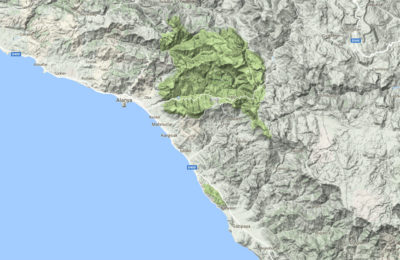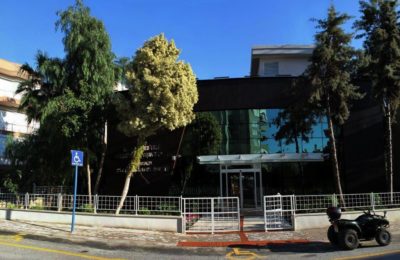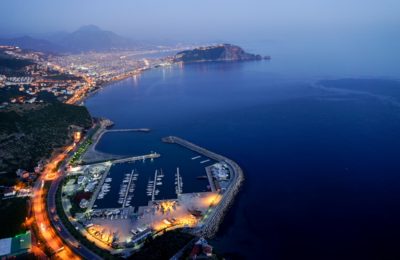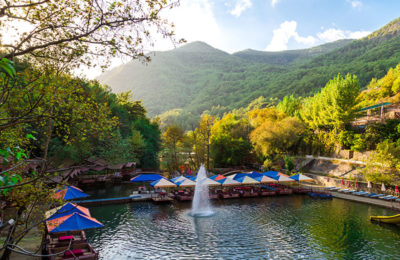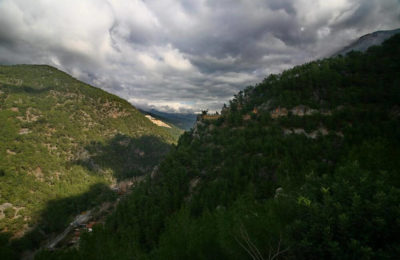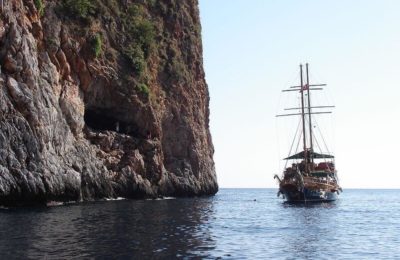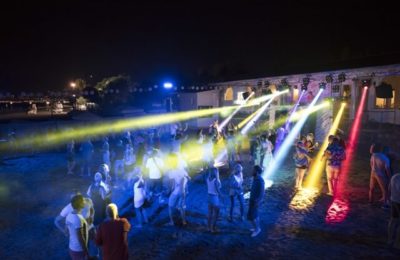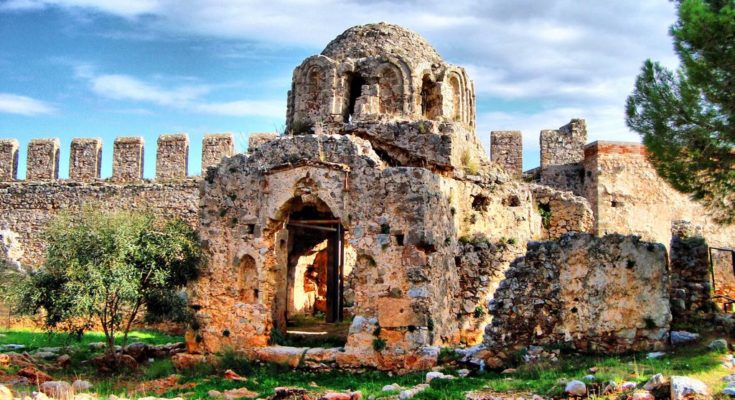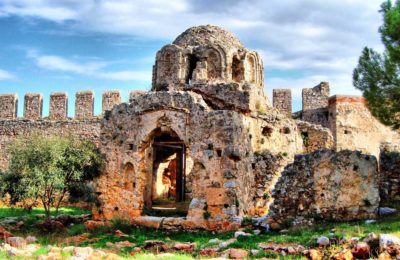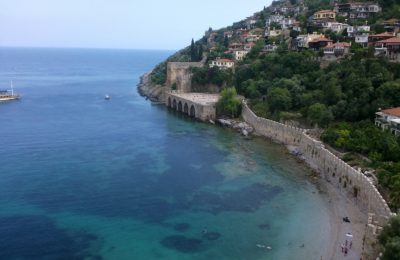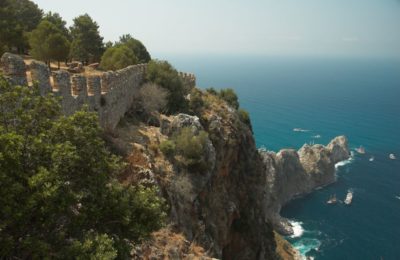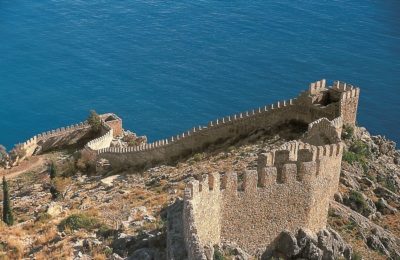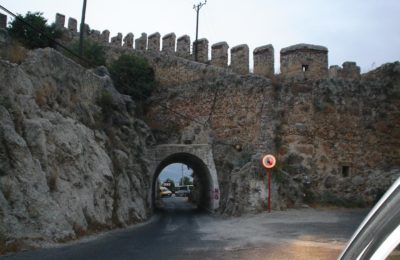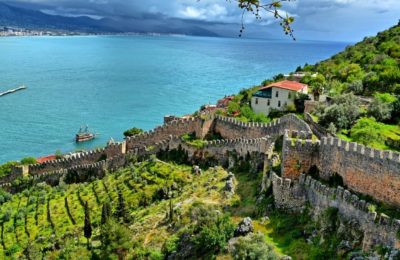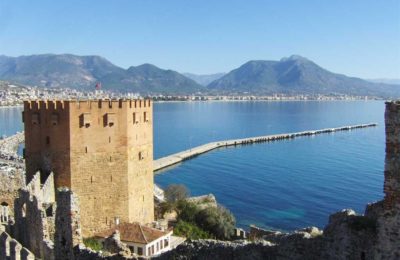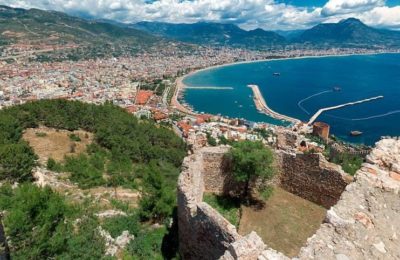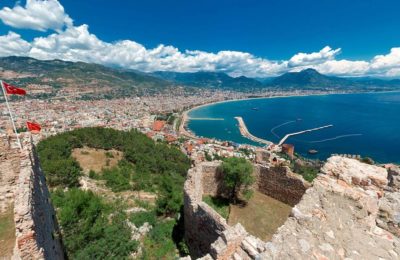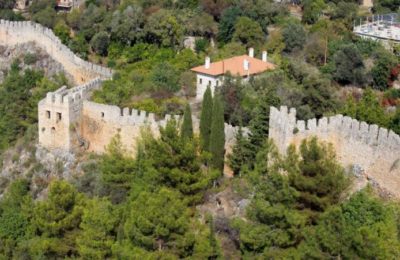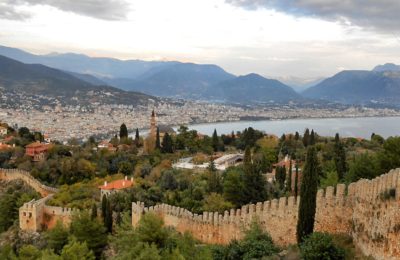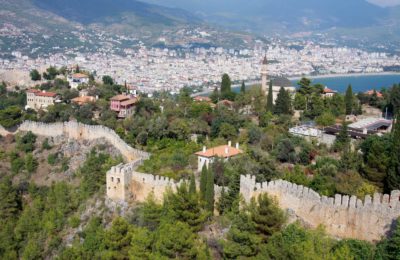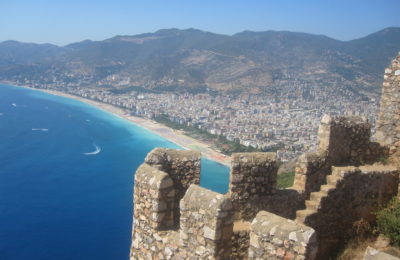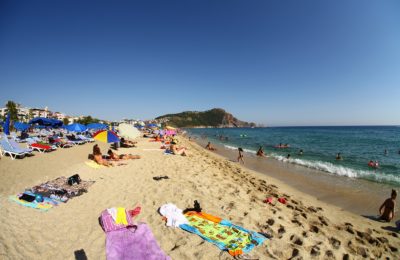Alanya Castle
Alanya Castle, whose ramparts are about 6.5 kilometers long, is on the peninsula 250 meter high above the sea. The settlement on Alanya peninsula, which is also known as “Kandeleri”, not only dates back to hellenistic era but also reflects the 13. century as a Seljukian site. The castle was built by Seljukian Sultan Alaaddin Keykubat, who reconstructed Alanya when he conquered it in 1221. The castle has 83 towers and 140 bastions. There are nearly 400 cisterns made for fulfilling the water need of town which was inside the castle in medieval ages. Some of these cisterns are still in use.
Kızılkule
This is an octagonal building inherited from Seljukians of 13. century as well as the symbol of Alanya. It is named as Kızılkule due to its upper parts’ being made of fired red bricks because of the difficulty of lifting stone blocks to higher parts. The tower, which was set against raids coming from the sea to protect the port and navy yard, has been used for military purposes for centuries.
Navy Yard
The navy yard, having five arched rooms, was constructed in such a way that it receives sunlight almost all the time sun is up. Alanya navy yard is the first yard in of Seljukians the Mediterranean region. There is a praying room on one side, and a guardsman room on the other side of the navy yard. Therefore, there is a well inside of one of the rooms, which has dried up in time.
Armory
There is an armory located on a rock 10 meters high above the sea, next to the navy yard to protect it. It is also known that is this armory, which was built in 1227 and made of dimension stones and has a rectangular infrastructure, cannons had been produced for battleships.
Ehmedek
It was rebuilt as a midpoint castle in Seljukian era in the place of little castle which was located on the north the main castle and inherited from Byzantium Empire. The structure is in such a location that has strategical advantage against land attacks and able to protect the keep, in which the sultan’s palace was placed.
Süleymaniye Mosque
It was at first built by Seljukian Sultan Alaaddin Keykubat in 1231, however, when it fell down, it was rebuilt by Kanuni Sultan Süleyman (The Magnificient) in the 16th century, during the Ottoman era. In order to provide acoustic to the mosque, 15 little cubes were placed to the dome, which was working as a hanger. This feature stands out during prayers.
Bedesten
It is in the castle, near Süleymaniye Mosque. It is thought to have been built as a bazaar or inn in the time of Karamanoğulları Seigniory, in 14th or 15th century. The historical building is used as a hotel, restaurant and cafeteria today.
Royal Mints
They are the structures that are located on Cilvarda Cape, which is composed of steep rocks 400 meters long, on the tip of the peninsula. Although it is called as a royal mint in public, in these with dimension stone made buildings are there not money being printed. One of the stony structures is a little church built in the 11th century. The others were most likely to have been used as monasteries.
Akşabe Sultan Small Mosque
It is in the castle, on the west of Bedesten, nearly 100 meters ahead of Süleymaniye Mosque. It was built by Akşabe Sultan, who was the first commander of Alaaddin Keykubat in Alanya Castle, in 1230. It has a square infrastructure and 2 rooms. One of the rooms is a prayer room and the other one is the tomb of Akşabe Sultan. There are 3 other tombs as well.
Andızlı Mosque
The mosque, which owes its name to the trees right beside it “arceutos drupacea”, reflects the architectural features of Seljukian era. The pulpit of it is one of the most beautiful sample of Seljukian wood engraving art.
Sitti Zeynep Sepulchre
It is located on a huge rock on a road leading to the castle. It is thought to have been built either in Seljukian or Ottoman era. The one buried under the sepulchre assumed as a saint. There are three, each of which is 2 meters long, sarcophaguses carved into the rock in which there is the sepulchre.
Hıdırellez Church
The church built on a slope viewing the Mediterranean, which is thought to have been built in the early 19th century, is used for worshipping by Christians and Muslims today.
Şarapsa Inn
It was built by Seljukian Sultan Gıyaseddin Keyhüsrev during the years between 1236-1246 on the Silk Road as a caravanserai. It is used as a entertainment center today, while it was an important accomodation center during medieval times.
Alara Castle
The function of this castle which is located on the Silk Road is providing security to caravans which used to take a break at an inn near Alara Brook. It looks magnificent. There are tunnels inside of the castle made with the way of stone carving. There are a little palace, castle employees rooms, a mosque and a bath house among the remains.
Alara Inn
It was built as a caravanserai on a plain 800 meters away from Alara Castle. The inn, which was built in 1231, was renovated a couple of years ago and today, it is used as a restaurant and shopping center.
Kargı Inn
It is on the west of Alanya, the north of Kargı Brook. It is thought to have been used as a caravanserai. There are vent holes on the ceilings of all of the rooms and these rooms are built around the middle loggia. Across the door of the inn, there are fixated cribs.




